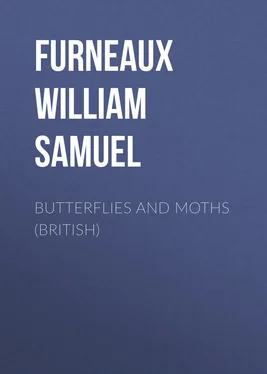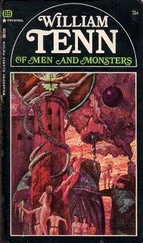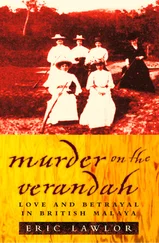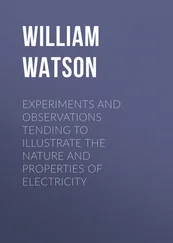William Furneaux - Butterflies and Moths (British)
Здесь есть возможность читать онлайн «William Furneaux - Butterflies and Moths (British)» — ознакомительный отрывок электронной книги совершенно бесплатно, а после прочтения отрывка купить полную версию. В некоторых случаях можно слушать аудио, скачать через торрент в формате fb2 и присутствует краткое содержание. Жанр: Природа и животные, foreign_antique, foreign_prose, на английском языке. Описание произведения, (предисловие) а так же отзывы посетителей доступны на портале библиотеки ЛибКат.
- Название:Butterflies and Moths (British)
- Автор:
- Жанр:
- Год:неизвестен
- ISBN:нет данных
- Рейтинг книги:5 / 5. Голосов: 1
-
Избранное:Добавить в избранное
- Отзывы:
-
Ваша оценка:
- 100
- 1
- 2
- 3
- 4
- 5
Butterflies and Moths (British): краткое содержание, описание и аннотация
Предлагаем к чтению аннотацию, описание, краткое содержание или предисловие (зависит от того, что написал сам автор книги «Butterflies and Moths (British)»). Если вы не нашли необходимую информацию о книге — напишите в комментариях, мы постараемся отыскать её.
Butterflies and Moths (British) — читать онлайн ознакомительный отрывок
Ниже представлен текст книги, разбитый по страницам. Система сохранения места последней прочитанной страницы, позволяет с удобством читать онлайн бесплатно книгу «Butterflies and Moths (British)», без необходимости каждый раз заново искать на чём Вы остановились. Поставьте закладку, и сможете в любой момент перейти на страницу, на которой закончили чтение.
Интервал:
Закладка:
Has the perfect insect any selfish motive in this apparently careful selection of a plant on which to lay its eggs? Does the female herself derive any benefit from the particular plant chosen for this purpose? In most cases, certainly not. For it often happens that the blossom of this plant is not by any means one of those that supply the sweets which insects love, and still more frequently does it occur that the eggs are deposited either before the flowers have appeared or after they have faded.
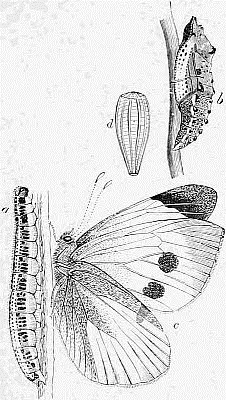
Fig. 10. – The Four Stages of the Large White Butterfly (Pieris Brassicæ).
a , larva; b , pupa; c , imago; d , egg.
Neither can we easily impute to the insect an acquired knowledge of the nature and wants of her offspring, or an acquaintance with botany sufficient to enable her to distinguish plant forms. Our only solution of the problem (which is really no solution at all) is to attribute the whole thing to that inexplicable quality which we are pleased to term natural instinct . It is to be observed, however, that it is not all butterflies and moths that display this unerring power. Some few seem to deposit their eggs indiscriminately on all kinds of herbage. But, I believe, the larvæ of these species are generally grass feeders, and would seldom have to travel far from any spot without meeting with an acceptable morsel.
But we must now pass on to a brief consideration of the other stages of the insect's existence. After a time, varying from a few days to several months, the young caterpillars or larvæ make their appearance. They soon commence feeding in right earnest. Their period of existence in this state varies from a few weeks to several months, and even, in some cases, to years. During this time their growth is generally very rapid, and they undergo a series of moults or changes of skin, of which we shall have more to say in a future chapter. Then, when fully grown, they prepare for an apparently quiescent form, which we speak of as the pupa or chrysalis, and in which they again spend a very variable period, extending over a few days, weeks, or months. Now, inclosed in a protective case, each pupa is undergoing a remarkable change. Some of its old organs are disappearing, and others are developing; and, after all the parts of the future insect have been developed as far as its narrow shell will permit, it bursts forth into the world as a perfect insect or imago .
Its wings at first are small, shapeless, and crumpled in a most unsightly fashion; but it is not long before they assume their full size, beautiful form, and gorgeous colouring. Then, in about another hour or two, the wings, at first soft and flaccid, have become sufficiently dry and stiff to bear their owner rapidly through the air.
We have thus observed some of the more striking features in the structure of the butterfly and moth in its most perfect state; and alluded in a very brief manner to the various stages through which these creatures must necessarily pass before finally reaching this stage. But now we must study these earlier stages more closely, and watch the insects during the marvellous transitions they are destined to undergo. This we shall do in the following chapters.
CHAPTER II
THE EGG
I suppose you are all acquainted with the general structure of the hen's egg, having dissected several, in your own way, many a time.
Its outer covering, which you speak of as the 'shell,' you have observed is hard and brittle. It is composed of a calcareous or limy substance, known chemically as carbonate of lime . If you put some pieces of it into an egg cup, and throw over them a little vinegar or any other liquid acid, you will see them gradually dissolve away, and small bubbles of carbonic acid gas will rise into the air. Then again, if you take a long and narrow strip of the shell, and hold one end of it in a gas or lamp flame, after a short time that end will become softer, and will glow brightly in the flame, for it is converted into lime – the same substance that is used by the builders for making their mortar – and the bright glow is really a miniature lime light , such as is always produced when a piece of lime is made intensely hot.
Just inside this shell you have seen a thin membrane or skin that is easily peeled off the substance of the egg itself. Next to this comes the 'white' of the egg, which is really colourless while liquid, but turns white and more or less solid in the cooking. Last of all, in the centre of this, you have noticed the oval yellow mass that is termed the 'yoke' or 'yolk,' and which contains the embryo of the future chick.
Now if you imagine this egg to be reduced in size till two or three dozen of them would be required to form a single line about one inch long, the outer calcareous shell to be entirely removed, the skin or membrane to be converted into a firmer substance of a horny nature, and, finally, the yolk to be absent and the whole internal space to be filled with the 'white,' you will then have some idea of the nature of the egg of a butterfly or moth.
To put the matter more briefly, then, we will say that the eggs of these insects are simply little liquid masses, usually of a colourless substance, surrounded by a horny and flexible covering.
Such a description may certainly give you some idea of the nature of the eggs of insects, but no amount of book reading will serve the purpose so well or be so pleasant as the examination of the eggs themselves. During the summer months very little difficulty will be experienced in finding some eggs in your own garden. Turn over some leaves and examine their under surfaces, choosing especially those plants which show, by their partially eaten leaves, that they are favourites with the insect world. Or you may amuse yourself by catching a number of butterflies – common 'Whites' are as good for the purpose as any – and temporarily confine them in a wooden or cardboard box, containing a number of leaves from various plants, and covered with gauze. In this way you are sure to obtain a few females that have not yet laid all their eggs; and if you watch your prisoners you will soon see them carefully depositing the eggs on the under surfaces of leaves, bending their abdomens round the edges if there is not sufficient room to get themselves completely under. And then, when you are satisfied with the number of eggs thus obtained for your examination, you can have the pleasure of seeing all your liberated captives flying joyfully in the free air.
In giving these simple instructions I have assumed that the reader has not yet learnt any of the characters by which female butterflies are to be distinguished from their lords and masters; but I hope that he will know soon, at least with regard to a good many species, from which individuals he may most reasonably expect to obtain eggs, and so be able to avoid the imprisonment, even though only temporary, of insects which cannot satisfy his wants.
Again, it is not necessary, after all, that butterflies should be captured for the purpose of obtaining eggs. Watch them as they hover about among your flowers. Some, you will observe, are intent on nothing but idle frolicking; and you may conclude at once that these have no immediate duty to perform. Others are flying without hesitation from flower to flower, gorging themselves with the sweets of life: these are not the objects of your search. But you will descry certain others, flying round about the beds and borders with a steadier and more matronly air, taking little or no notice of their more frivolous companions, and paying not the slightest heed to the bright nectar-producing cups of the numerous flowers. These are seriously engaged with family affairs only. Watch one of them carefully, and as soon as she has settled herself on a leaf, walk steadily towards her till you are near enough to observe her movements. She will not move unless you approach too closely, for, like busy folk generally, she has no time to worry about petty annoyances. You will now actually witness the deposition of the eggs exactly as carried on in the perfect freedom of nature; and the eggs themselves may be taken either for examination or for the rearing of the caterpillars.
Читать дальшеИнтервал:
Закладка:
Похожие книги на «Butterflies and Moths (British)»
Представляем Вашему вниманию похожие книги на «Butterflies and Moths (British)» списком для выбора. Мы отобрали схожую по названию и смыслу литературу в надежде предоставить читателям больше вариантов отыскать новые, интересные, ещё непрочитанные произведения.
Обсуждение, отзывы о книге «Butterflies and Moths (British)» и просто собственные мнения читателей. Оставьте ваши комментарии, напишите, что Вы думаете о произведении, его смысле или главных героях. Укажите что конкретно понравилось, а что нет, и почему Вы так считаете.
